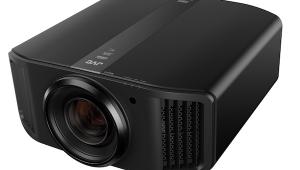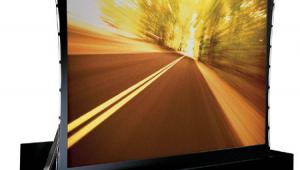Is DLP's 4K Really 4K?
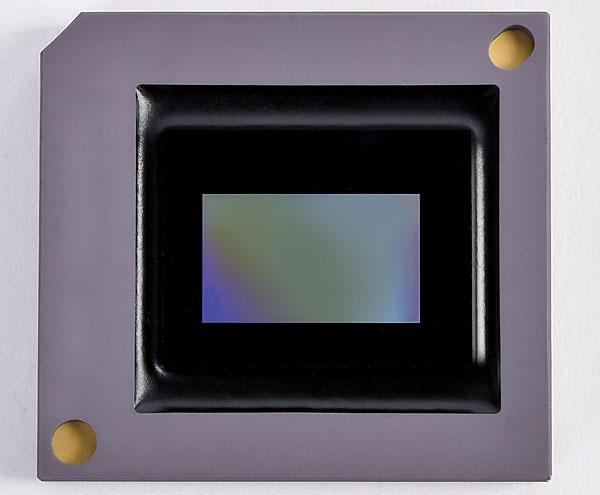
How’s It Work?
Both TI and manufacturers implementing the chip call the result a true 4K image despite the lower native resolution on the DMD and its inability to deliver all the pixels of an Ultra HD frame at one time. The pixel-shifting approach employed here is similar to the solutions used over the years by JVC and more recently by Epson, both of which involve native 1920 x 1080 (1080p) imaging chips that are then doubled onscreen via an optical actuator to deliver “4K-like” images without the expense of true 4K native imaging chips. Old-timers may recall that the first 1080p DLP devices—notably those used in rear-projection TVs from the likes of Hewlett-Packard and Samsung around 2007—also achieved their claimed resolution with the assistance of pixel shifting. Conceptually, the very rapid, consecutive delivery of two half-frames of video, with the second set of pixels shifted vertically and horizontally so they overlap, is seen by the eye as a single frame.
In the case of this new DLP chip, the optical actuator is a glass pane that’s mounted somewhere in the light path after the DMD and before the lens. To bring about the pixel shifting, the glass is set into oscillation by what’s described as a voice coil, which moves the second half-frame of video by one-half pixel up and one-half pixel over to the right. TI says that because each of the 8 million-plus pixels is individually addressable, the system meets the Consumer Technology Association’s definition of a 4K display.
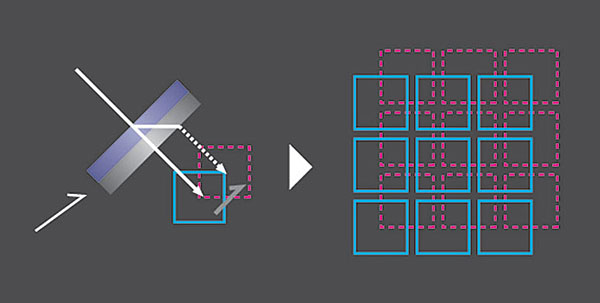 ,P>
One thing we can say about the new chip and its supporting processing, dubbed XPR, is that it comes with at least one inherent limitation that doesn’t necessarily affect other 4K displays. The system always requires playback at a 60-hertz frame rate, with the DLP chip operating at 120 Hz to enable the pixel-shifting, so there is no native 24p playback. If the input signal is a multiple of 60 Hz, it gets converted with 2:2 pulldown; otherwise, 3:2 pulldown is used. By comparison, for example, JVC’s e-Shift system runs at 96 Hz for 24p content, so no pulldown is required. On another technical note, the system accepts signals with up to 12-bit color depth but converts this to 10-bit, which is what is output to the screen. That’s not unusual in today’s market, as displays that retain 12-bit processing from input to screen remain rare.
,P>
One thing we can say about the new chip and its supporting processing, dubbed XPR, is that it comes with at least one inherent limitation that doesn’t necessarily affect other 4K displays. The system always requires playback at a 60-hertz frame rate, with the DLP chip operating at 120 Hz to enable the pixel-shifting, so there is no native 24p playback. If the input signal is a multiple of 60 Hz, it gets converted with 2:2 pulldown; otherwise, 3:2 pulldown is used. By comparison, for example, JVC’s e-Shift system runs at 96 Hz for 24p content, so no pulldown is required. On another technical note, the system accepts signals with up to 12-bit color depth but converts this to 10-bit, which is what is output to the screen. That’s not unusual in today’s market, as displays that retain 12-bit processing from input to screen remain rare.
Presentations of the new chip at CES earlier this year reportedly showed convincing results, but unfortunately I wasn’t on hand to see the proceedings or take note of which test patterns were used. Recently, though, in my home studio, I had the opportunity to view two projectors that use the new DLP technology and get a first-hand look at their performance. I tested both the BenQ HT9050 ($8,999) and Optoma UHD65 ($2,500) with a variety of 4K material, both on disc and from pattern generators. I also compared them directly with two native 4K display devices: my reference JVC DLA-RS4500 projector ($35,000) and the LG OLED65C7P Ultra HDTV (about $3,200 as of mid-summer 2017). The intent of this comparison wasn’t to evaluate their performance as display devices against each other; rather, it was to see how the XPR system looked with both test patterns and standard video content when compared with true native 4K displays.
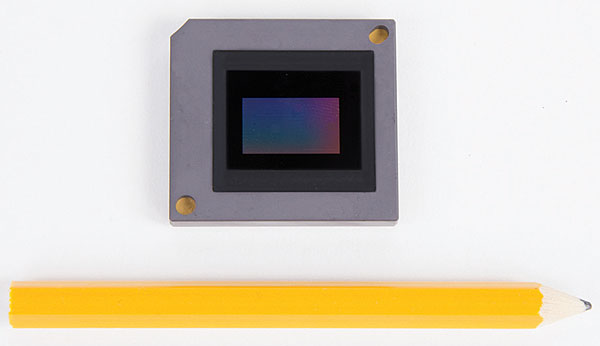
How’s It Look?
I began my assessment with test patterns. I have a variety of native 4K patterns at my disposal, including those from DVDO and Lumagen test generators, as well as a full set of UHD/HDR10 patterns from Diversified Video Solutions (diversifiedvideosolutions.com). I used the latter set of patterns the most, as they include a large variety of resolution and sharpness patterns that can immediately show any inconsistencies with resolution.
Comparing the DLP XPR solution with the native 4K displays showed obvious artifacts using both the Sharpness and Overscan patterns and the Single Black Pixels set. When I used the simple horizontal and vertical single-line patterns, I noticed obvious softening or artifacts that prevented clean delineation of the pattern, which was present with both native displays. The Single Black Pixels pattern was the most obvious of the group, with pronounced artifacts visible when compared with the native displays. Other parts of the patterns fared better, such as text. But it was clear—at least with these two projectors—that the XPR technology wasn’t delivering the same level of performance as the native chips, which didn’t require any tricks to achieve their resolution.

